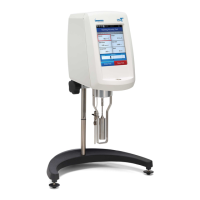
Do you have a question about the Brookfield DV2T and is the answer not in the manual?
| Type | Viscometer |
|---|---|
| Model | DV2T |
| Repeatability | ±0.2% |
| Data Output | USB, RS-232 |
| Accuracy | ±1.0% of range |
| Temperature Range | Optional temperature probe |
| Power Supply | 100-240V, 50/60Hz |
| Display | 5-inch Color Touch Screen |
| Viscosity Range | 1-2, 000, 000 cP |
Details components, utilities, specifications, and installation for the DV2T Viscometer.
Covers key functions, interface navigation, safety symbols, precautions, and cleaning procedures.
Guides through power up, auto-zero, status bar, and basic navigation.
Covers home screen, configuring viscosity tests, loading, viewing, and managing files.
Details range, out-of-range conditions, printing, running tests, and viewing results.
Provides a quick start guide and essential preparations for making viscosity measurements.
Guides on selecting spindles/speeds and configuring data collection methods.
Details end conditions, additional parameters, running tests, and viewing results.
Explains live, post-test averaging, and comparing results for data analysis.
Configures device settings like temperature probes and user preferences for sound/display.
Manages measurement units, regional formats, alarms, user access, and backups.
Covers setting time/date, backup/import, default paths, resets, and calibration reminders.
Details PG Flash capabilities for test creation, its features, and Windows system requirements.
Explains the PG Flash interface layout and shows examples of test programs.
Explains the electronic gap setting and its components for Cone/Plate models.
Guides on mounting, water bath connection, and spindle attachment for Cone/Plate.
Step-by-step guide to setting the electronic gap for Cone/Plate measurements.
Instructions on how to verify instrument calibration using standard fluids.
Tables detailing viscosity ranges for different viscometer models and spindles.
Discusses low viscosity limits, laminar flow, and factors affecting measurement accuracy.
Explains how accessory devices may affect the overall measurement accuracy.
Explains fluid categories like Newtonian and Non-Newtonian and their properties.
Discusses variables like shear rate, spindle geometry, and container affecting readings.
Lists spindle entry codes, SMC, and SRC for viscosity and shear rate calculations.
Lists viscometer models, Torque Constants (TK), and model codes for calculations.
Lists standard fluids and initial calibration procedures for general spindles.
Details calibration steps for Small Sample Adapter, Thermosel, UL/DIN adapters, and Helipath.
Covers Cone/Plate calibration and how to interpret test results and allowable error.
Explains the purpose, design, and use of the Brookfield guard leg and its effect on measurements.
Lists available speeds for LV and RV viscometers and DV2T options for selection.
Describes the Model G standard laboratory stand and its components.
Describes the Model Q optional laboratory stand and its features.
Instructions for unpacking, assembling stands, and securely mounting the viscometer.
Explains the Probe Clip and its use for attaching RTD temperature probes to guard legs or beakers.
Troubleshooting steps for spindle not rotating or wobbling.
Guidance on resolving inaccurate readings, zero return, and unstable display issues.
Provides dimensional drawings and specifications for the DV2T Viscometer and laboratory stand.
Lists Brookfield's website, YouTube channel, publications, and training for support.
Details warranty coverage, repair, and service contact information worldwide.
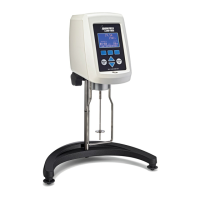
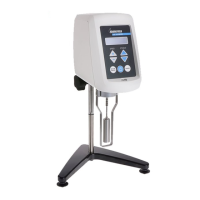
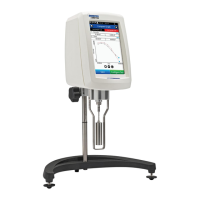

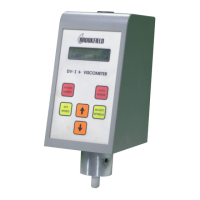
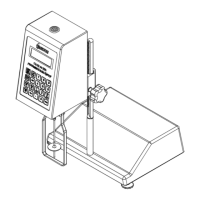
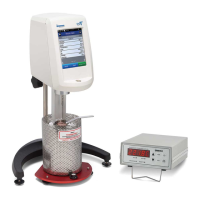



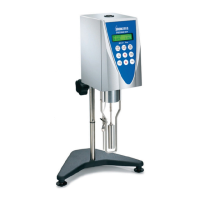
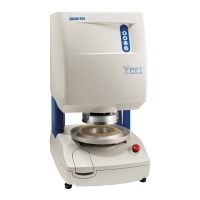
